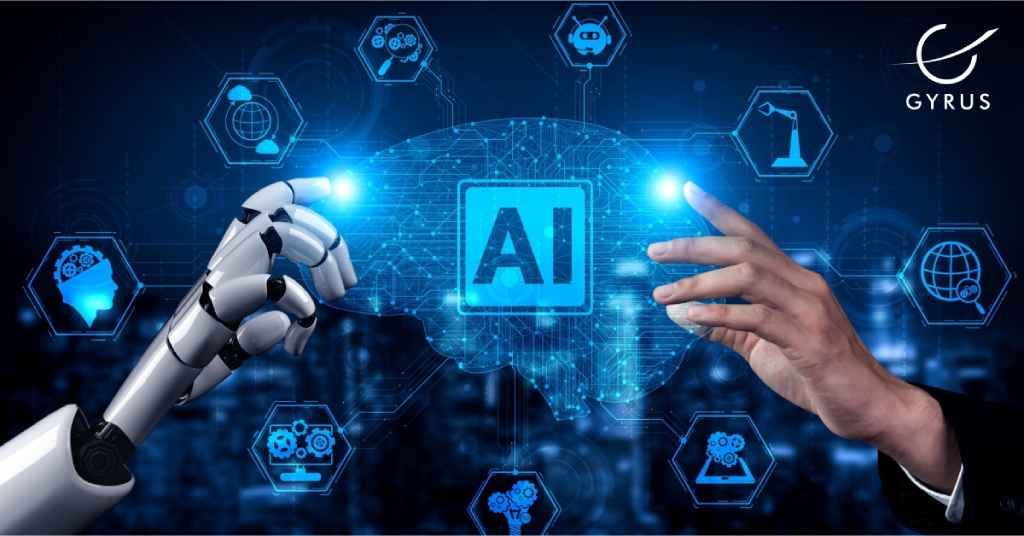Exploring the Impact of AI on Learning and Development in 2023

AI has been at work across different industries to optimize efficiencies, improve outcomes, and drive innovation and profitability. From optimizing logistics to detecting fraud and conducting research to creating art, AI applications are expanding phenomenally. Given the impact and promise, the use of artificial intelligence in training is also increasing.
The influence of artificial intelligence in learning and development (L&D) initiatives is set to increase now. This is mainly because the learning needs of organizations are rapidly evolving with digital and technological transformation.
Managing workplace shifts like the move to hybrid work also places a heavy focus on training initiatives to help accommodate change and build a thriving enterprise. That apart, robust learning and development initiatives are now major influencers of employee engagement as new demographics place learning and development as a key engagement driver. Research shows that organizations are also improving employee retention by providing learning opportunities.
While AI in training has been in action in learning and development teams for some time now, here is how AI is further influencing the space.
- Driving Strong and Impactful Digital-First Learning Strategies
- Meta-Learning Drives User Experiences
- AI-Powered Design and Development
- Expand Learning Support with Smart Tutoring Systems
- Increased Engagement with Native Language Processing
- Intelligent Information Management
Creating digital-first learning strategies is now an L&D imperative as the workplace changes completely. Accommodating the learning needs of the entire workforce, creating and curating learning programs that are easily disseminated and accessed, leveraging new technology to create immersive learning experiences, and tracking employee engagement and learning outcomes in real-time in a location-agnostic manner are critical.
AI can now be at the front and center of digital-first learning strategies and help teams curate deeper learning experiences that drive better learning outcomes without increasing the cognitive load.
AI has been in use to elevate user experiences across industries. Now AI steps up the game and moves towards delivering intuitive learning experience platforms that facilitate learning experiences based on the learner's preferences, needs, and goals.
Meta-learning in the L&D context is the use of AI tools to assemble all content, such as programs, courses, articles, videos, etc., coherently and purposefully and create an intelligent centralized knowledge repository. AI-powered LMS and LXPs (Learning Experience Platforms) deliver intuitive user experiences with intelligent content recommendations, facilitate content discovery, benchmark skills, and provide clear insights on how to improve learning outcomes.
The impact of artificial intelligence in training has been profound in the design and development field. AI has been in use so far for instructional design work, such as using machine learning capabilities in authoring and design tools, voice transcription tools, searching text and images, etc.Capabilities and systems like large language models, image generators, content generators, translation tools, video generators, etc., are now on their way to transforming how learning experiences and instructional designs are curated and created with AI.
The AI-powered instructional design generated from content generators such as GPT-3 eases off the load on content creation. Instructional designers can obtain draft ideas or visuals that can be easily edited using AI tools. They can easily create video footage using AI-powered video footage generators, removing the need to go through each video in a library.
Creating deep, intuitive, and personalized learning pathways also becomes easier as AI tools mature and capably connect to the organization's internal information repositories and libraries and accelerate the content design and development process.
AI is ready to help learning and development teams do more heavy lifting. Integrating AI in learning and development platforms allows organizations to expand learner support and improve learning outcomes.Not only can AI help L&D teams gain more insights and clarity into the learning needs, but it also helps them map the user journey to identify challenges that impede learning outcomes.
L&D teams can also put AI to work and convert interactive lectures into guides and flashcards. AI-powered chatbots further answer learner queries in real-time and provide deep support throughout the learning process.
Interacting with trainers and instructors in native languages is now possible as AI assistants get integrated into everyday learning. Mature Natural Language Processing (NLP) capabilities in AI allow systems to understand, process, analyze, and respond to human languages.This capability expands the scope of engagement and improves learning outcomes by allowing learners to ask questions in their native language.
Artificial intelligence in training can make training more language-agnostic and inclusive than ever before. This allows organizations to access more experienced and expert trainers and becomes a great capability as the world of work becomes more distributed and diverse.
Knowledge, skills, and information are far more accessible today than ever before. At the same time, the volume of information and the training of digital assets in enterprises are also expanding rapidly. As information expands and business units and individuals keep adding more information, managing internal asset libraries and knowledge hubs increases in complexity.Managing all this information and content through manual cataloging and tagging has been the way so far. However, the manual approach makes this task effort-intensive and error-prone.
AI comes to learning and development teams to solve this challenge and help them effectively and efficiently utilize assets and course content around skills or competencies. It also makes information discovery simpler, faster, and more effective, allowing learners to look for answers in the flow of work in real-time.AI contextualization understands the relationships between different pieces of content and the complexities involved. An AI contextualization engine acts as a librarian and capably organizes all the content by topics, skills, and competencies.
More profoundly, AI contextualization engines simplify content management by easily contextualizing different types of content, such as simple texts and documents, policies, training content, PPT, case studies, etc.
Conclusion
Learning and development teams can expect more digitization, especially with the advancements in technologies such as AI. The use of artificial intelligence in training is set to expand as L&D strategies and programs require insights around work patterns to provide more personalized learning experiences and deliver efficient and cost-effective learning programs.
Connect with our team of experts to leverage AI in training and elevating the outcomes of your learning and development initiatives.





-overview-(2022)-gyrus450.jpg)



